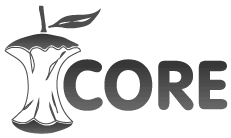Creativity from a sociocultural perspective: Why are women less frequently recognized as creative?
DOI:
https://doi.org/10.36881/ma.v2i1.773Keywords:
creativity, gender gap, sociocultural obstacles, inequality, equityAbstract
Creativity from a sociocultural perspective is defined as a complex and applied phenomenon that is influenced by various factors and brings about transformation in the context. Based on these foundations, the objective of this study was to discuss how stereotypes and gender barriers, rooted in sociocultural structures, constitute inhibiting factors for the development, expression, and recognition of creative women. To achieve this, a literature review was conducted. Data from previous research are analyzed, providing insights into the different barriers overcome by highly creative women and offering a sociocultural interpretation of the challenges they faced on their path to creative recognition. As a result, this analysis not only sheds light on the difficulties but also identifies specific areas that require attention to drive significant social transformation, emphasizing the urgency of overcoming societal prejudices and limitations; the study underscores the critical importance of establishing a sociocultural environment that celebrates and recognizes creativity equitably for all individuals. This work contributes to the discussion on gender equity in the creative sphere by highlighting the need to break down obstacles limiting women's creative expression.
Downloads
References
Amabile, T. M. (1988). A model of creativity and innovation in organizations. Research in Organizational Behavior, 10, 123-167.
Amabile, T. M., & Pratt, M. G. (2016). The dynamic componential model of creativity and innovation in organizations: Making progress, making meaning. Research in Organizational Behavior, 36, 157-183. https://doi.org/10.1016/j.riob.2016.10.001
Amorós, C. (1985/1992). Hacia una crítica de la razón patriarcal (2 ed.). Anthropos.
Anderson, K. (2015). Modern misogyny: Anti-feminism in a post-feminist era. Oxford University Press.
Bender, S. W., Nibbelink, B. L., Towner-Thyrum, E., & Vredenburg, D. (2013). Defining characteristics of creative women. Creativity Research Journal, 25(1), 38-47. https://doi.org/10.1080/10400419.2013.752190
Csikszentmihalyi, M. (1999). Implications of a systems perspective for the study of creativity. In R. J. Sternberg (Org.), Handbook of creativity (pp. 313-335). Cambridge University Press. https://doi.org/10.1017/CBO9780511807916.018
Elisondo, R. C. (2018). Procesos creativos de mujeres emprendedoras. Boletín Científico Sapiens Research, 8(1), 41-53. https://dialnet.unirioja.es/servlet/articulo?codigo=6705581
Femenías, M. L. (2020). Ellas lo pensaron antes: Filósofas excluidas de la memoria (Espiritualidad & Pensamiento). Ediciones Lea.
Ferrant, G., & Thim, A. (2019). Measuring women’s economic empowerment: Time use data and gender inequality. OECD Development Policy Papers, 16. https://doi.org/10.1787/02e538fc-en
Gerodetti, N., & McNaught-Davis, M. (2017). Feminisation of success or successful femininities? Disentagling “new femininities” under neoliberal conditions. European Journal of Women Studies, 24(4), 1-15. https://doi.org/10.1177%2F1350506817715045
Glăveanu, V. P. (2020). A sociocultural theory of creativity: Bridging the social, the material, and the psychological. Review of General Psychology, 24(4), 335-354. https://doi.org/10.1177/1089268020961763
Grönlund, A., & Öun, I. (2018). In search of family-friendly careers? Professional strategies, work conditions and gender differences in work–family conflict. Community, Work & Family, 21(1), 87-105. http://doi.org/10.1080/13668803.2017.1375460
Heilman, M. E., & Caleo, S. (2018). Combatting gender discrimination: A lack of fit framework. Group Processes & Intergroup Relations, 21(5), 725-744. https://doi.org/10.1177/1368430218761587
Kaufman, J., C., & Sternberg, R. (2019). An introduction to the second edition: Divergences and some convergences. In J. Kaufman, & R. Sternberg (Eds.), The Cambridge handbook of creativity (pp. 1-4). Cambridge University Press. https://doi.org/10.1017/9781316979839.002
Kronborg, L. (2010). What contributes to talent development in eminent women? Gifted and Talented International, 25(2), 11-27. https://doi.org/10.1080/15332276.2010.11673567
Kronborg, L. (2021). Eminent women were once gifted girls: How to transform gifted potential into eminent talents. In R. J. Sternberg, & D. Ambrose (Eds.), Conceptions of giftedness and talent (1st ed., pp. 215-233). Palgrave Macmillan. https://doi.org/10.1007/978-3-030-56869-6_13
Mensa, M. T., & Grow, J. M. (2015). Creative women in Peru: Outliers in a machismo world. Communication & Society, 28(2), 1-18. https://doi.org/10.15581/003.28.35962
Molina-Luque, F., Casado Gual, N., & Sanvicen-Torné, P. (2018). Mujeres mayores también activas, creativas y fuertes: Modelos para romper estereotipos. Revista Prisma Social, 21, 43-74. https://revistaprismasocial.es/article/view/2438
Nakano, T. C., Oliveira, K. S., & Zaia, P. (2021). Gender differences in creativity: A systematic literature review. Psicologia: Teoria e Pesquisa, 37, 372116. https://doi.org/10.1590/0102.3772e372116
Navarro, C. G. (2020). Invitadas. Fragmentos sobre mujeres, ideologías y artes plásticas en España (1833-1931). Museo Nacional del Prado.
Pedersen, C., & Haynes, R. (2015). Double blind: Supervising women as creative practice-led researchers. Educational Philosophy and Theory, 47(12), 1265-1276. https://doi.org/10.1080/00131857.2015.1035631
Plucker, J. A. (2022). Creativity: It´s not just for hippies anymore. In J. A. Plucker (Ed.), Creativity and innovation theory, research, and practice (2nd ed., pp. 1-4). Routledge. https://doi.org/10.4324/9781003233923-1
Observatorio de la Cultura. (2020). La Cultura en España. Fundación contemporánea.
Porto, M. M. (2023). Obstáculos para el desarrollo y reconocimiento de mujeres altamente creativas. Aportaciones para reducir la brecha de género. (Tesis doctoral no publicada). Universidad Autónoma de Madrid. https://repositorio.uam.es/
Porto, M. M., & Romo, M. S. (2021). Características personales de mujeres altamente creativas: una revisión sistemática. Revista Ibero-Americana de criatividade e inovação, 2(4), 241-255. https://recriai.emnuvens.com.br/revista/article/view/59
Porto, M. M., & Romo, M. S. (2022). The generative force of the domain and the field: contributions of highly creative women. Creativity, 9(2), 119-137. https://doi.org/10.2478/ctra-2022-0014
Posada, K. K. (2009). Filosofía y feminismo en Celia Amorós. Logos: Anales del Seminario de Metafísica, 42, 149-168. https://dialnet.unirioja.es/servlet/articulo?codigo=3137586
Prado, R. M., & Fleith, D. S. (2020). Mulheres talentosas no Brasil: Trajetórias e desafios profissionais na sociedade contemporânea. Psicologia em Estudo, 25, 46906. https://doi.org/10.4025/psicolestud.v25i0.46906
Reis, S. M. (2002). Internal barriers, personal issues, and decisions faced by gifted and talented females. Gifted Child Today, 25(1), 14-28. https://doi.org/10.4219/gct-2002-50
Reis, S. M. (2005). Feminist perspectives on talent development: A research based conception of giftedness in women. In R. J. Sternberg, & J. Davidson (Eds.), Conceptions of giftedness (2nd ed., pp. 217-245). Cambridge University Press.
Reis, S. M. (2021). Creative productive giftedness in women: Their paths to eminence. In R. J. Sternberg, D., & Ambrose (Eds.), Conceptions of giftedness and talent (pp. 317-324). Palgrave Macmillan. https://doi.org/10.1007/978-3-030-56869-6_18
Rodrigo, A. (1979). Mujeres de España. Las silenciadas. Plaza & Janés.
Romo, M. (2018). Tiene género la creatividad? Obstáculos a la excelencia en mujeres. Estudos de Psicologia (Campinas), 35(3), 247-258. http://dx.doi.org/10.1590/1982-02752018000300003
Stainback, K., Kleiner, S., & Skaggs, S. (2016). Women in power: Undoing or redoing the gendered organization? Gender & Society, 30(1), 109-135. https://doi.org/10.1177/0891243215602906
Shields, S. (1975). Functionalism, Darwinism, and the psychology of women. American Psychologist, 30(7), 739-754. https://doi.org/10.1037/h0076948
Downloads
Published
How to Cite
Issue
Section
Categories
License

This work is licensed under a Creative Commons Attribution 4.0 International License.
The content of the publications is the responsibility of the authors. The journal allows authors to maintain copyright on published articles and documents. The license used is Commons Attribution-NonCommercial International License. CC BY NC

















